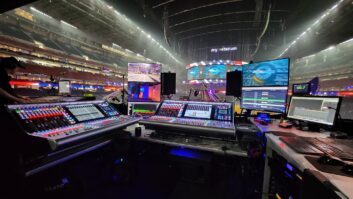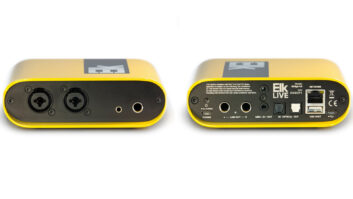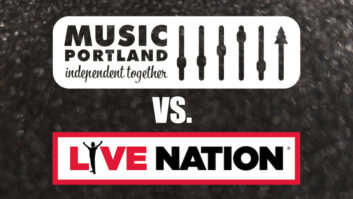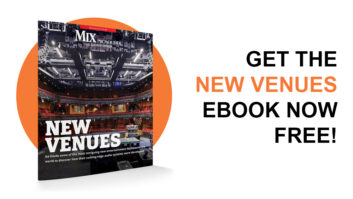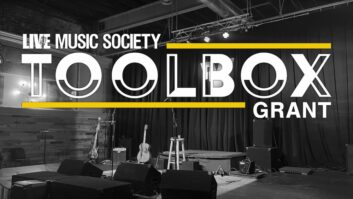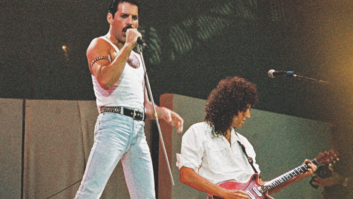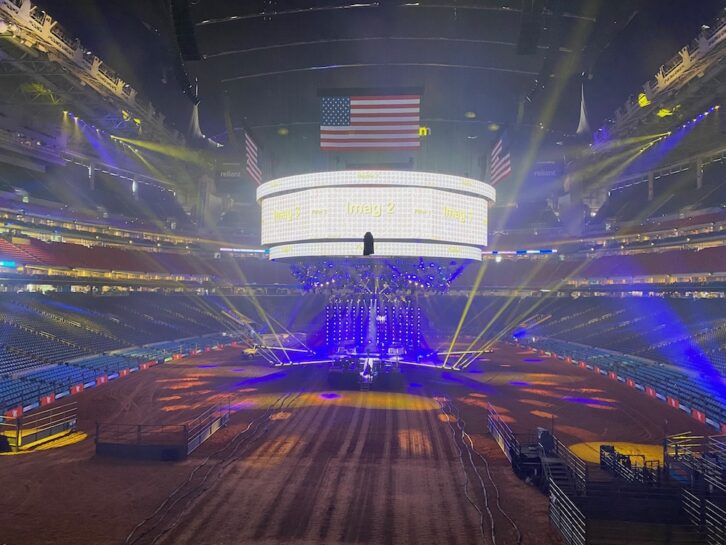
Houston, TX (May 31, 2023)—It has often been said that everything is bigger in Texas, and the annual Houston Livestock Show and Rodeo is here to prove it. Held over three weeks beginning in late February, the event attracts well over 2 million visitors annually and offers a rodeo competition purse of more than $2 million, the largest on the championship circuit. Oh, yeah, and the nightly concerts can draw more than 70,000 music fans.
RodeoHouston is a Professional Rodeo Cowboys Association money event, which means that the prize money—the measure by which competitors are ranked—counts toward eligibility to compete in the National Finals Rodeo. To reach rodeo fans beyond Houston’s NRG Stadium, where saddle bronc riding, steer wrestling, tie-down roping and other events are held, the Cowboy Channel, regional sports network Bally Sports Southwest and TeleXitos Houston, a sister station to Telemundo Houston, broadcast the two hours of competition live nightly.
“We need to be the best rodeo broadcast there is—and I think we are,” says James Davidson, Managing Director, Broadcast and Audio Visual, a 25-year veteran with the HLSR.
To achieve that goal, Davidson says, he brings in people such as Jason Martin of Jason Martin Audio, a provider of A1 broadcast remote audio services and a boutique RF equipment rental house. As an experienced sports broadcast A1, Martin “brings to us the latest broadcast techniques, little tricks and new gimmicks that keep the audience engaged,” Davidson says. “I’ve got the equivalent of Jason on the production side, sports producers who weave a story so that even if you’re not a rodeo fan, you can keep track of what’s happening. That’s how I keep our show and our production techniques current with the rest of sports production.”
Those techniques are supported by the latest technology, which this year included the installation of an 80-fader SSL System T S500 mixing console in the broadcast production control room near the stadium. Last year, HLSR added a 48-fader version of the desk in a music control room where Malcolm Harper, owner and operator of Reelsound Recording, mixed the concerts nightly—as he has for nearly 30 years— for distribution around the 350-acre NRG Park and to a multitrack recording system.
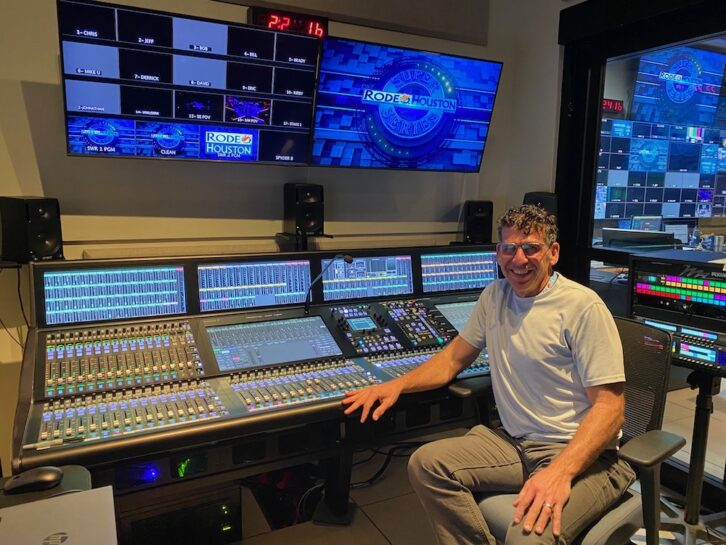
“You give a guy like that the right tools to use and the results are going to be great,” Davidson says. “We had a really good experience with Malcolm’s desk and thought we should go back and do the next room with the same system.” Both systems were integrated by Bill McKee and his team at Houston-based Broadcast Technical Services.
This year’s event was Martin’s first experience with the System T. “It was challenging in that it’s a Dante-integrated desk and there was a lot to wrap my head around,” says the A1, who has mixed the RodeoHouston broadcast for more than 25 years. “But it was a very understandable workflow.”
Back when the pandemic first impacted live events, Martin began collaborating on the show with another A1, Terry Sanders, with whom he also works on NBA, MLB and other major sports broadcasts. “He was invaluable in helping make decisions, how we were going to do things and final compression, EQ and dynamics settings,” Martin says.
THE AUDIO BACKBONE
The newly installed SSL console platform supports 420 paths, into which Marin introduced about 215 inputs, over two dozen more than the previous desk in the room could handle. In configuring the System T for 10 stereo groups and a couple of mono announce groups, he says, “We created two mono programs, four stereo programs and a 5.1 program.”
Davidson and his team implemented a large fiber optic network when the first System T was installed, linking I/O at the stage and in the announce booths and patch room in the stadium with the building housing the broadcast and music mix rooms. “We always knew that Dante was an inevitability. We just didn’t know we’d be doing it in a big way this soon,” he says. “When we started designing a signal flow to accommodate the new System T, we ended up with this massive network—and you better have redundancy built in, so we built two parallel networks.”
At the SSL console, Martin and Sanders were in the eye of the storm, pulling in sources such as announce, crowd and effects microphones from the stadium and around the complex over the network, including mic sources from LD Systems, the Houston-based AVL provider, in the rodeo ring. “There are quite a few things going backward and forward, depending on the requirements of the show,” Martin confirms. “Oftentimes, while the concert’s going on, I’m also doing a submix of another wrap-up show.”
Riding the Mix at RodeoHouston
For the first time, the A1s also managed the IFBs and production comms via Dante interface cards in the desk. “That was probably one of the more challenging aspects of the show,” Martin reveals. “I will say this—in Dante Controller, when you label the transmits and receives, it automatically shows up on the labeling on the desk. There was still a lot of paperwork to be done, but that helped a lot.”
Dante-enabled Glensound announcer boxes, another first this year, were also managed through the desk, including routing the talkback circuits so that announcers could talk to each other. “Being able to remote control all access of the boxes via GUI was a pleasure,” Martin adds. “Not only do they handle the audio well, but the headphone drivers at the other end sounded really good, too.”
Martin’s biggest challenge was that the announcers and the effects are also in the P.A. “My announcers are not in the P.A. for most of the work I do,” he explains, “so we’re doing everything we can to take the P.A. out of the mix. We use a combination of de-essers and enhancers; we play with a Rupert Neve enhancer on some of the RF microphones on the dirt or on the field announcers.”
MIKING THE RODEO RING
Martin used various mono and stereo shotgun mics and RF equipment, supplied through his own company, from Audio-Technica, Lectrosonics, Sennheiser and Shure, according to the application. Like any large city, Houston has a dense RF environment. “We moved all of our announcers’ wireless microphones to the 941 band, which allowed us to have no worries about interference,” he reports.
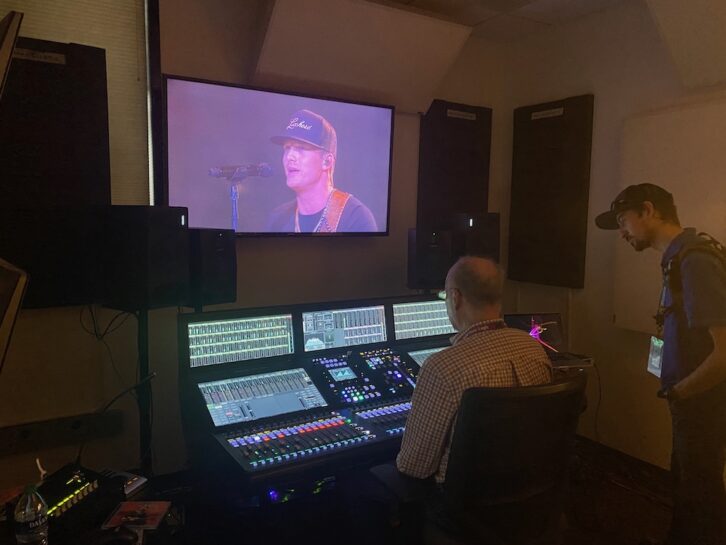
He paired a mono Sennheiser MKH 60 shotgun, in an RF configuration for mobility, and a stereo Audio-Technica BP 4029 camera mic at the chutes, where the riders prepare to be released into the ring. “We found that stereo shotguns on the handheld cameras, especially in the bull riding and horse events, have been great,” he says. “You have people talking to the athlete on the other side of the camera, so it really enhances the stereo image.”
Eight auto-mixed dynamic mics were positioned low to the ground at the chutes, he continues: “You hear the animals bellowing or kicking. I may keep those mics open to give a generic arena sound, they’re so unidirectional. They’re gated, so I’m not getting the P.A.; I’m getting more pronounced sounds.”
In fact, he continues, “There are 10 or 14 mics I’m able to leave open without getting a lot of P.A. leakage. It’s often just a few microphones at a time where I’m challenged with leakage. Unfortunately, that includes the crowd mics. I tend to dip the crowd real low when I’m into more intimate moments. The competitors talk really low and they’re stoic, and they’ll go from almost whispering to slapping themselves.
“There were a couple of occasions where the bulls were bellowing and making a lot of noise. One cowboy turned to his partner and said, ‘Thanks for the instructions,’ just clear as day. He was joking. That was really a key moment. There was some neat audio this year.”
